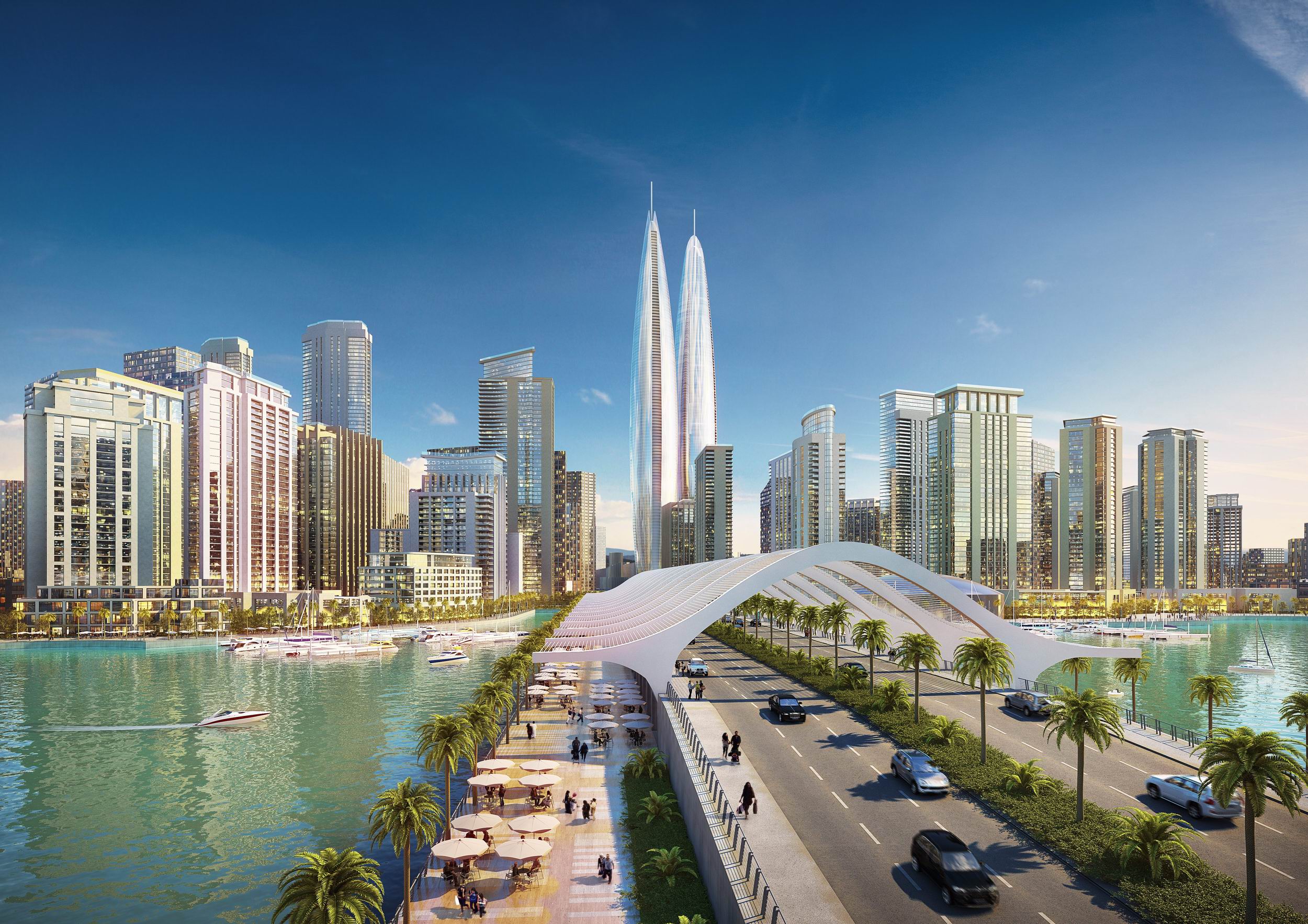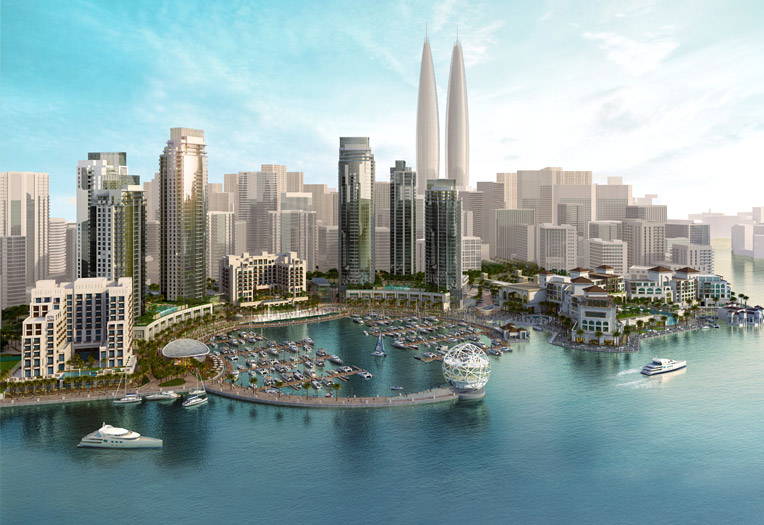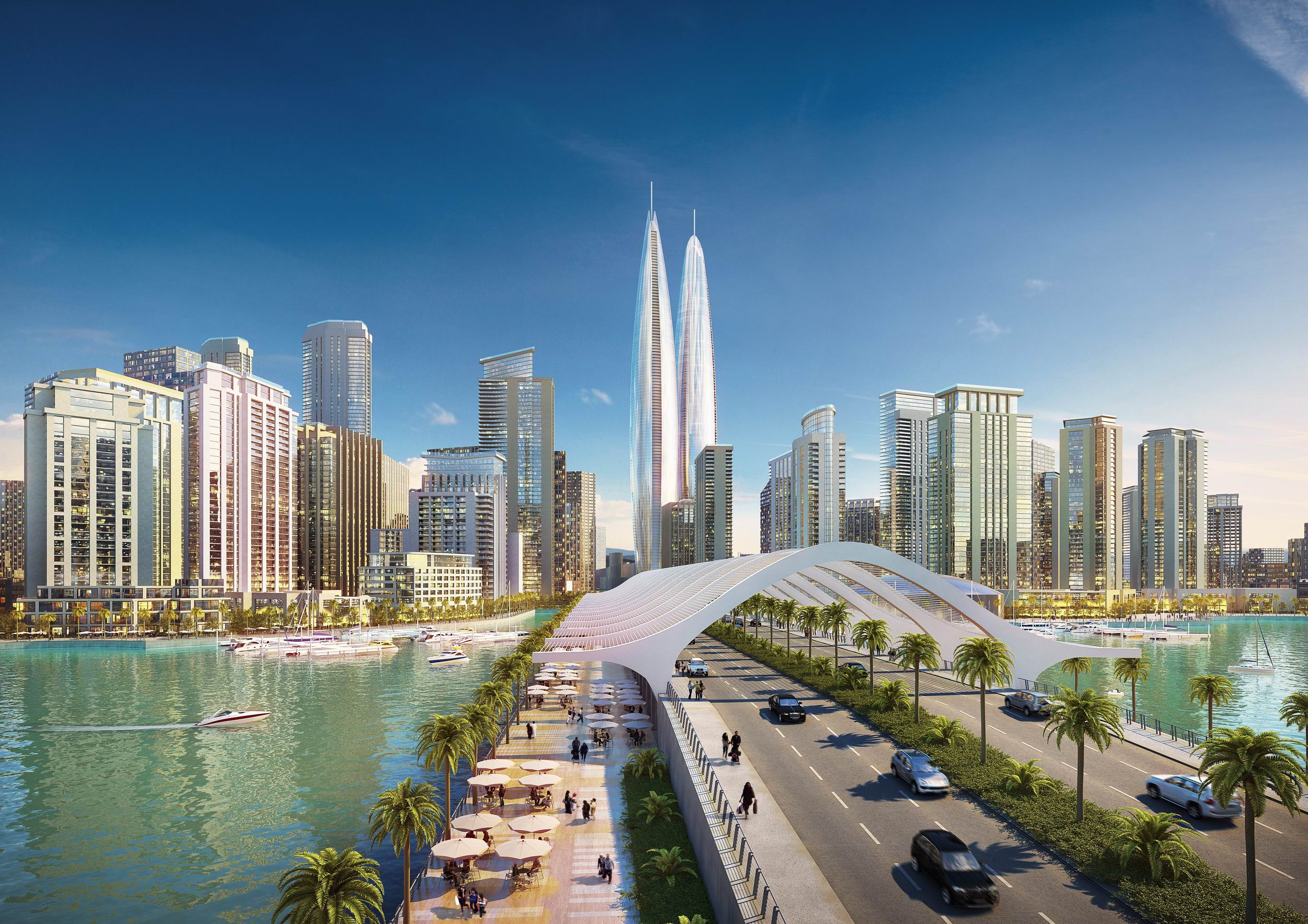Emaar Properties, known for its futuristic approach to buildings, has unveiled plans for a new project containing two towers that will top the charts in height, making them the world’s tallest towers once completed.
Dubai Creek Harbour will boast 39,000 homes and 22 hotels, making it three times the size of its downtown area, which contains the world’s tallest building, Burj Khalifa. Emaar Properties is partnering with Dubai Holding on this project.
Six towers, retail elements, and three hotels will round out Dubai Creek Residences, the first phase of the project, with the twin towers expected to be the centerpiece of the development. The six towers, which are 40 stories tall, will become waterfront properties, and contain one, two, and three bedroom apartments ranging from 880 to 2,154 sf. Dubai Creek Harbour as a whole will encompass 6 million sm (or 1,482 acres).
Starting November 1, apartments in two of the six towers will be available for sale on a first-come first-serve basis in the following locations: Dubai, Abu Dhabi, London, and Moscow.
Chairman of Emaar Properties, Mohamed Alabbar, told The National that the current market will be able to handle this magnitude of a project. “I think all the stakeholders in Dubai in this business learnt their lessons and have matured, the buyer, seller, bank, and regulator,” said Alabbar. “What is boils down to is supply and demand.”
Alabbar also commented to Dubai Holding that the vision of the project, “was to create a dynamic city of the future that integrates smart networks, while building on the cultural heritage of our city.”
Emaar Properties has not released information about the cost of the project, funding requirements, when ground will be broken, or the architect of the project.
For more information, visit www.emaar.com.
Related Stories
| Nov 10, 2011
Skanska Moss to expand and renovate Greenville-Spartanburg International Airport
The multi-phase terminal improvement program consists of an overall expansion to the airport’s footprint and major renovations to the existing airport terminal.
| Nov 10, 2011
Suffolk Construction awarded MBTA transit facility and streetscape project
The 21,000-sf project will feature construction of a cable-stayed pedestrian bridge over Ocean Avenue, an elevated plaza deck above Wonderland MBTA Station, a central plaza, and an at-grade pedestrian crossing over Revere Beach Boulevard
| Nov 10, 2011
Thornton Tomasetti’s Joseph and Choi to co-chair the Council on Tall Buildings and Urban Habitat’s Outrigger Design Working Group
Design guide will describe in detail the application of outriggers within the lateral load resisting systems of tall buildings, effects on building behavior and recommendations for design.
| Nov 9, 2011
Lincoln Center Pavilion wins national architecture and engineering award
The project team members include owner Lincoln Center for the Performing Arts, New York; design architect and interior designer of the restaurant, Diller Scofidio + Renfro, New York; executive architect, FXFOWLE, New York; and architect and interior designer of the film center, Rockwell Group, New York; structural engineer Arup (AISC Member), New York; and general contractor Turner Construction Company (AISC Member), New York.
| Nov 9, 2011
Sika Sarnafil Roof Recycling Program recognized by Society of Plastics Engineers
Program leads the industry in recovering and recycling roofing membrane into new roofing products.
| Nov 9, 2011
American Standard Brands joins the Hospitality Sustainable Purchasing Consortium
American Standard will collaborate with other organizations to build an industry-wide sustainability performance index.
| Nov 8, 2011
Transforming a landmark coastal resort
Originally built in 1973, the building had received several alterations over the years but the progressive deterioration caused by the harsh salt water environment had never been addressed.
| Nov 8, 2011
WEB EXCLUSIVE: Moisture-related failures in agglomerated floor tiles
Agglomerated tiles offer an appealing appearance similar to natural stone at a lower cost. To achieve successful installations, manufacturers should provide design data for moisture-related dimensional changes, specifiers should require in-situ moisture testing similar to those used for other flooring materials, and the industry should develop standards for fabrication and installation of agglomerated tiles.


















